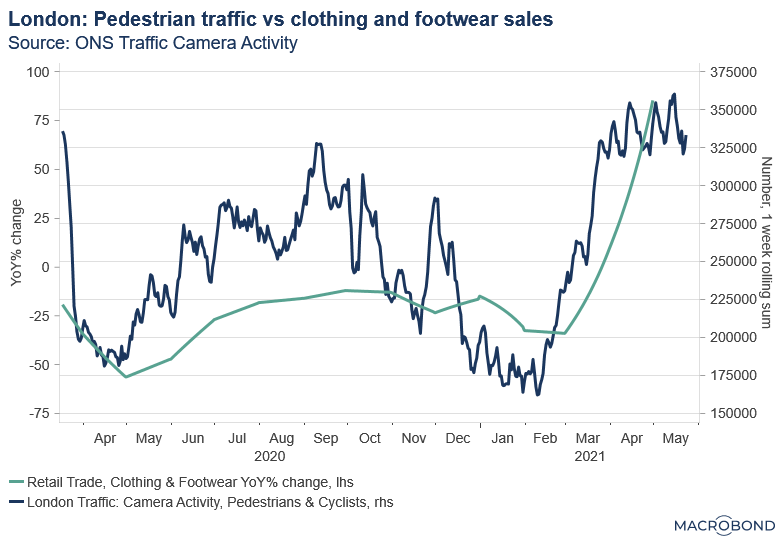High-frequency Data refers to data fluctuations observed at intricate and refined time intervals at a convenient rate for advanced data analytics capabilities. The ceaseless advancement of computer analysis resulted in high-frequency data management, which was a breakthrough in gaining benefits during data processes and data acquisition at extreme fine scales. The study of high-frequency data is monumental in probing the limitations and space of advancement of market microstructures and complex omnichannel trading processes.
Therefore, learning about high-frequency data can help statisticians, economists, market strategists, and many data-driven specialists promptly narrate lucrative stories by manipulating colossal amounts of business data. In this article, we focus on allowing the reader to understand the use, advantages, and disadvantages of high-frequency data and identify the role of high-frequency data in the current disruptive business world.
Importance of High-frequency Data in The Dynamic Business
High-Frequency Data is majorly used in intraday observations of transactions and other rapidly fluctuating datasets (mainly in financial domains). High-Frequency Data primarily refers to financial analysis of data at an efficient rate in a particular time frame (initially referred to as a ‘tick’). This method is the out-turn of a data collection method that was called tick-by-tick data. A ‘tick’ refers to collecting data from a single event to another; an event can be a transaction, a change in data behaviour, a quote, or any other event that can be measured as a separate occurrence. But due to the limitations of this method- such as collecting copious amounts of ticks for a day- the emergence of High-frequency Data was encouraged. Every passing minute leads to the accumulation of an abundance of data in the business world; therefore, High-frequency Data becomes crucial in many unstable financial environments.
The importance of observing data at a finer time scale is much higher, especially when they are capitalised on to understand the realised volatility and the microstructures of markets. High-frequency Data is used to analyse the dynamics of intraday transaction-by-transaction of certain aspects like prices, volumes, quantities, and other measurable values. For example, this data collection method does not stop by vaguely saying that a specific value meets equilibrium; it takes the analysis a step further by explaining the speed and routes taken in reaching equilibrium. These capabilities enabled by High-frequency Data lead to interestingly challenging econometrics with fresher and innovative ways of data analytics. Employing High-frequency Data helps everyday investors to understand dynamic markets (like various financial markets) since these environments tend to present thousands of prices in a single market per day.
The importance of High-frequency Data is primarily highlighted in Market Microstructure. Market Microstructure can be generally defined as a study of dynamic and convoluted financial markets and illustrate and define how they operate in different events. Market Microstructure is one of the most recognised and vastly used economic research methods used since it capitalises on advanced algorithms and the benefits of electronic trading. It studies many events and financial situations such as determinants of quotes, exchange structures, intraday trading behaviours, transaction costs, trading venue changes, and more. These economic events are mushrooming in the Business Finance World; therefore, High-frequency Data is used by financial researchers and analysts in gaining a solid analytical approach and gaining advantages in sophisticated financial decision-making in real-time. To better understand High-frequency Data, it is essential to independently understand the advantages and disadvantages, which will be further explained in this article.
Noteworthy Advantages of Using High-frequency Data
Use A Narrow Time Window in Liquid Market Environments
Executing Comprehensive Government Surveys

What are The limitations of High-frequency Data?
Erroneous Data Collection
Limitations in Data Management
Where are We Heading with These Analytical Advancements?
Cerexio is one of the advanced software solution providers in Singapore that enables modern data solutions for data-heavy establishments to remain relevant and stable in liquid and illiquid markets. Cerexio Data Streaming and Cerexio Multi-protocol Drivers are two of the most recognised solutions for tackling High-frequency Data sets and generate actionable business intelligence for data-dependent industrial practitioners worldwide. Connect with the Cerexio Client Support Team to learn more about how our solutions help your company tackle High-frequency Data in real-time.
The above information helps the reader to have a sound understanding of how modern companies capitalise on High-frequency Data and what the limitations are in High-frequency Data that they have to be careful about. In brief, High-frequency Data is the best method of data and insight collection in lucrative trading, financial, marketing, and purchasing capabilities for companies.
